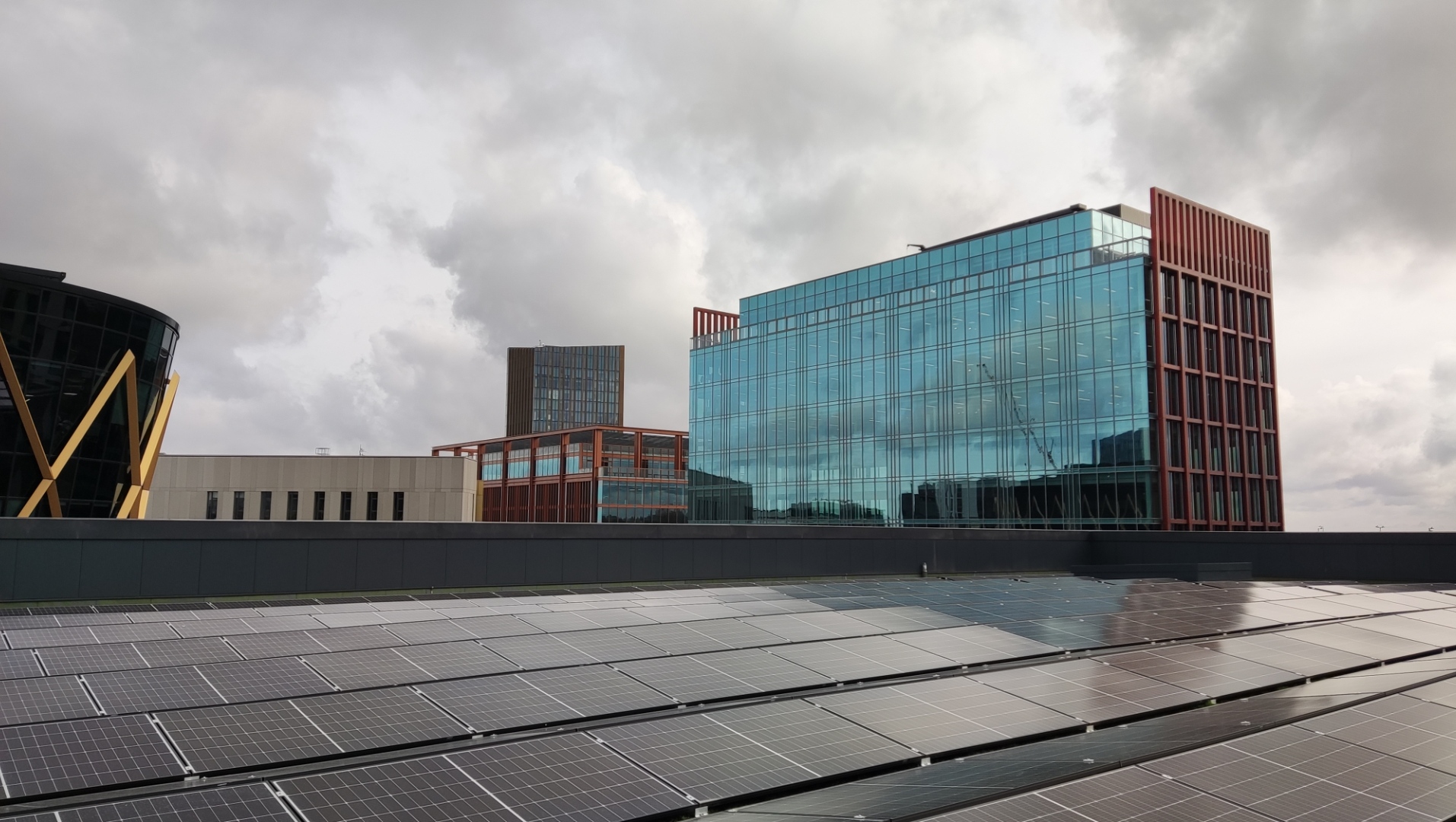Carbon reduction projects
A range of projects are underway to reduce the emissions of our estates and operations.
What is the project?
As part of Newcastle University’s Climate Action Plan, and our target to increase the amount of renewable energy generation on campus, this project will install solar photovoltaic (PV) arrays on the rooftops of many of our buildings on campus. These new arrays will boost the generation capacity provided by our existing solar panels on buildings including King’s Gate, the Great North Museum Hancock, and the Cassie, Henry Daysh, and Devonshire buildings.
You can learn more about solar power and the University’s work in this area, on our blog.
What is involved?
Newcastle University's Estates and Facilities department have appointed a contractor, EES Group, to develop designs for the PV arrays and install them on our roofs. To significantly increase the amount of renewable energy we generate on campus we will be seeking to maximise the area of the PV array installed on each building.
Once the arrays are in place, data showing the amount of electricity being generated will be shown on a website so that students, colleagues and visitors can see how much electricity we are generating from the sun, rather than buying from the grid.
Who is involved?
The Estates and Facilities project manager is Tony Douglass, and the University has appointed EES Group to carry out the work.
Oversight of the project will be done by the Climate Project Steering Group, co-chaired by Nick Collins, Executive Director of Finance, and Richard Davies, Pro-Vice-Chancellor Global and Sustainability.
There is a stakeholder group meeting every two weeks with representatives from all the University faculties and wider interested groups – if you think you should be part of this group, and are not, then please contact Tony Douglass directly.
How will the project impact me?
There will be limited impact on building users during these works. Most of the work will be carried out on building rooftops, limiting the noise and visual disruption to users.
However, some short power isolations may be necessary to connect PV arrays to the building network. It may occasionally be necessary to have a crane situated outside the building to lift materials onto the roof. Building users will be notified via their faculty representative if this is required.
Further updates will be provided via this webpage and the stakeholder group following initial assessments by the contractors.
What is the project?
Heating and powering our campus is one of the University’s largest sources of carbon dioxide emissions and so work to improve the efficiency of these systems is very effective at reducing our institution’s impact on the environment.
A major current project in this area is the installation of a biofuel combined heat and power (CHP) plant in Merz Court’s Energy Centre. This new system uses greener biofuel to generate electricity while also harnessing waste heat to warm up our buildings – greatly reducing carbon emissions as compared to conventional systems. You can learn more about this system on our blog.
How widely will these impacts be felt?
The CHP will have a substantial impact on carbon savings as Merz Court’s Energy Centre provides district heating to a whole swathe of the campus, including the:
- Henry Daysh building,
- Cassie building,
- Stephenson building,
- King Edward VII building,
- Percy building,
- Old Library Building,
- And Merz Court itself!
How long will this take?
Work on the CHP’s design began in 2019 and the engine will be ready to provide heating and power for the next heating season (autumn/winter 2024).
What is the campus LED project?
The campus LED project is a set of long-term estates improvement works designed to upgrade the general internal lighting of 44 high-use buildings across the University’s central campus. In addition to new LEDs replacing older, more energy-intensive bulbs, the project team will also install lighting controls, such as presence detection and daylight detection systems, to reduce unnecessary use of lighting.
Finally, as the project moves across all areas of many buildings, it will also be used as an opportunity to carry out remedial works where existing issues are identified.
How much energy will this project save?
Once complete, the project is expected to save 2,900,000 kWh of electricity per year. This will reduce the University’s consumption, lowering stress on the energy grid and allowing local solar generation to fulfil higher percentages of building supply.
Additionally, this power saving will also create a financial savings on energy bills significant enough that the project will pay itself back in 6 years and 5 months (a shorter amount of time than the project itself took to complete!).

